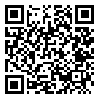Volume 16, Issue 64 (1-2008)
JGUMS 2008, 16(64): 76-83 |
Back to browse issues page
Download citation:
BibTeX | RIS | EndNote | Medlars | ProCite | Reference Manager | RefWorks
Send citation to:



BibTeX | RIS | EndNote | Medlars | ProCite | Reference Manager | RefWorks
Send citation to:
Saghafi nia M, Nafisi N, Araghi zadeh H, Mohebi H, Moharam zadeh76 Y. Traumatic Shock Therapy Results in West Country’s Casualties Following Trauma Life Support Course. JGUMS 2008; 16 (64) :76-83
URL: http://journal.gums.ac.ir/article-1-347-en.html
URL: http://journal.gums.ac.ir/article-1-347-en.html
1- , Dr_Sagafi@yahoo.com
Abstract: (16257 Views)
Abstract
Introduction: When an accident occurs in out of reach places, supporting the injured persons in early moments has a high importance. Because hypovolemic shock as a result of haemorrhage is one of the most causes of mortality in casualties, proposing appropriate instructions to reduce this problem is important especially in underdeveloped provinces of country that access to medical services and transferring of the injured person is difficult and takes a long time.
Objective: Study the effects of trauma life support course in improving physiologic situations of injured persons in the Mehran area, Ilam province from 1380-84.
Materials and Methods: In this four years study, at first Trauma life support course was done in Mehran and five rural areas around it. Then 471 casualties because of car accidents, land-mine accidents and bullet strike were analysed. To determine physiologic situation of the victims, were determined by PSS (physiologic severity score).Required data was collected by via a check list that was designed for this study.
Results: Of 641 cases, 471 were eligible for final analysis. The supported (first) group consisting 226 cases and not supported (second) group consisted of 245. The most prevalent cause of trauma in both groups was car accidents (%61.5). Stopping bleeding was the most frequent measure used for %50 of casualties. The mean PSS for the first group and second group were 7/505 and 6.799, respectively at the time of their transfer to surgical hospital in Ilam. There was a statistically significant difference between two groups (%95 CI for difference: 0.3 to 0.912).
Conclusion: This study revealed that the traumatic patients which were supported in the first minutes by the help providers that were educated in this research, has better general condition at the time of admission in the central hospital. Because of high prevalence of injuries in Iran and poor medical services in transferring injured patients to higher referral centers, especially in areas with lower socioeconomic situations, such education classes can reduce injury-related morbidity and mortality and could lead to better management old treatment of these casualties, and it is suggested that health-care systems considered as one of their major priorities.
Review Paper: Research |
Subject:
Special
Received: 2013/12/24 | Accepted: 2013/12/24 | Published: 2013/12/24
Received: 2013/12/24 | Accepted: 2013/12/24 | Published: 2013/12/24
| Rights and permissions | |
 | This work is licensed under a Creative Commons Attribution-NonCommercial 4.0 International License. |






